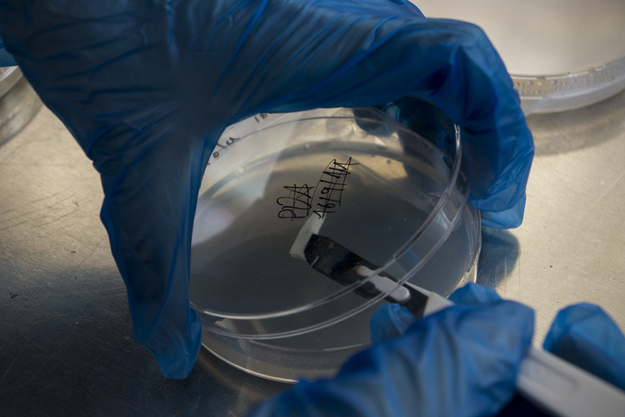"The idea for the project came from this fascination with a single hair," Dewey-Hagborg told CNN. "This turned into a research project exploring exactly what I could discover about someone from an artifact they left behind.” From a cigarette butt, she can discern a person’s ancestry, gender, eye and hair colour, complexion and freckles. She can even make an informed guess as to their weight and facial dimensions.
The pieces are eerie, and almost feel intrusive, like she’s invaded her subject’s privacy and stolen something left unguarded, which is entirely the point. “If people find it to be a little creepy, that's OK," she said. "It's meant to make you aware of these issues and make you aware that this is possible.” She has coined the phrase “genetic surveillance” to describe what she’s done and maybe explain our feelings of discomfort.
As a viewer, it is a relief to hear that there are limitations to the accuracy of her work. Dewey-Hagborg considers it more of a family resemblance. "It's important to understand that these portraits are a general likeness. They're not exact reconstructions," she said. "They'll have things in common with the person, but they won't look exactly like the person.” She is also unable to determine ages from the DNA samples, so all of her faces look around 30.
"It's meant to be an exploration at the intersection of art and technology and science," she said. "And it's meant to be a provocation.” however, it is also playful. Her piece “Probably Chelsea” consists of thirty different possible portraits of Chelsea Manning. Algorithmically-generated by an analysis of her DNA, they shows that our genomic data can tell a multitude of different stories about who and what we are.
However, her work also sheds a cold and disturbing light on the difference between what is personal to us, and what we legally “own”. It is a beautiful but unnerving warning of the trails we leave, and how they could make us vulnerable to theft, now as she has demonstrated, and also in the future.
